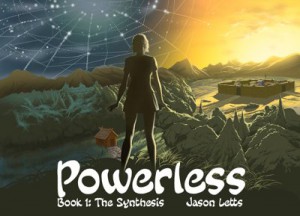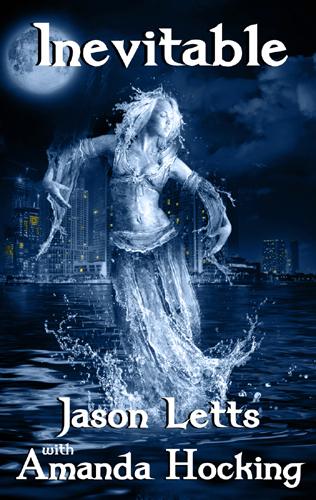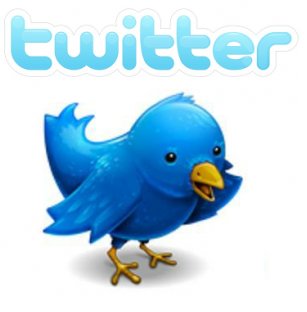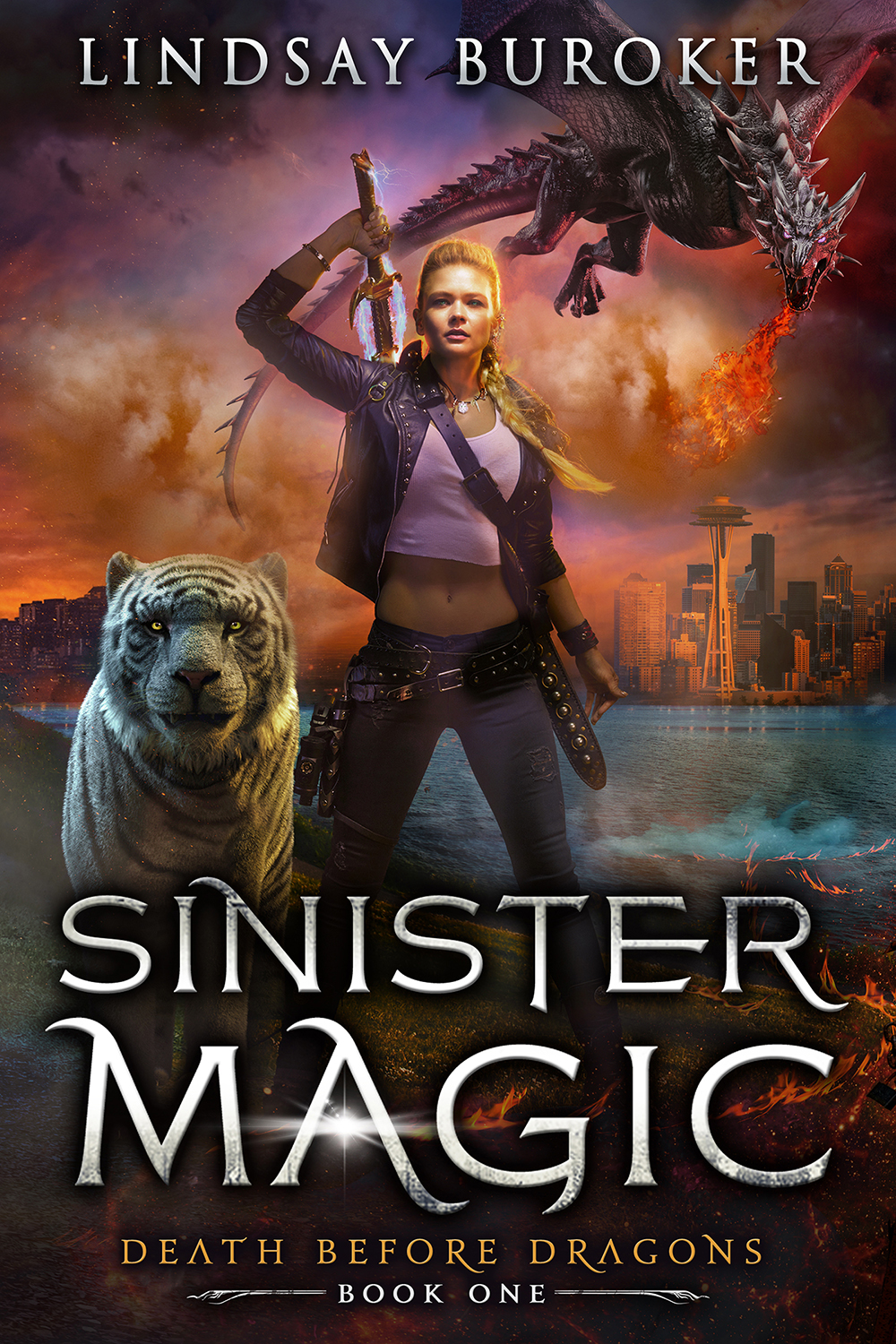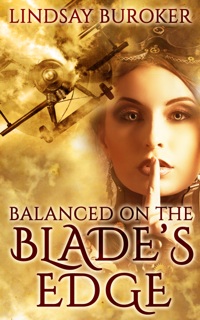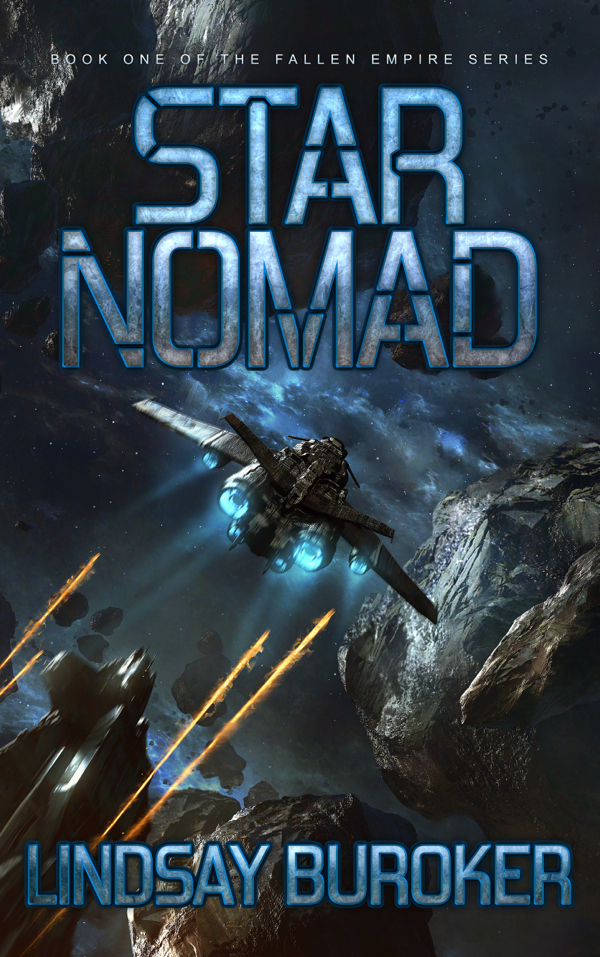Warning: this post is long and rambling. Read at your own discretion.
There are a lot of challenges as an indie ebook author, but perhaps the biggest is being found. As I’ve mentioned before, nobody is going to stumble across your work at the bookstore, and, with Amazon’s millions of books for sale, it’s unlikely on-site searches are going to lead people to your work either. That will change if you start selling enough for your ebook to show up in various bestseller categories, but getting to that point is a challenge.
I’ve written about my Kindle Nation Advertising Results, which helped me sell a bunch of ebooks in one day, and today I’m going to talk about Goodreads, which has led to a small trickle of continuing sales.
I’ve run pay-per-click advertising campaigns for my day job, and I was leery about getting anything except a high credit card bill out of Goodreads, but they’ve proven more effective than I expected. Amazon and Barnes & Noble don’t tell you where sales originate, so it’s hard to say anything with 100% certainty, but I believe I’m spending less on advertising there than I’m making from books purchased through the ad campaigns.
In other words, it’s profitable.
Let me give you a breakdown of how Goodreads works and what I’m doing to achieve my results. (Just to be clear, these are not staggering results. Right now, I’m spending in the neighborhood of $4-$5 a day there and making $10-$14 in royalties–selling 5-7 ebooks a day at $2.99 each. Not all my book sales are from Goodreads, since I still sell some on days when GR clicks are low, but I’ve definitely noticed a correlation between higher click days and higher sales days. Because I’m very new as an ebook author–you can read my recent Indie Ebook Publishing Results After Six Weeks–and my books aren’t being mentioned left and right all over the web, I suspect this isn’t a coincidence.)
How Goodreads Advertising Works
As I mentioned, Goodreads is a pay-per-click advertising system, meaning you pay every time someone clicks your ad. If nobody clicks, you get charged nothing, but Goodreads also won’t show your ads much. Here’s a blurb from their FAQ:
We use a complex algorithm to determine which ads are shown on the site. A major factor in this algorithm is initial click-through rate– that’s the click-through rate for the ad in its first few hundred impressions for the day. The ads that generate more clicks in those first few hundred impressions are shown more frequently throughout the day, while those that don’t generate as many clicks early are given a lower priority. This is how we make sure that the most relevant ads are shown most frequently. How the ad was performing the day before has no bearing on this, as each ad gets a fresh chance each day.
You can choose how much you want to bid per ad, with the minimum being ten cents. Here’s another blurb to explain how the bidding works (sort of):
All self-serve ads are sold at a default rate of $0.50 per click, but you can bid anywhere from $0.10 to $300.00 per click. While higher bid amounts are given higher priority, the initial click-through rate is still more important in determining which ads are shown the most frequently.
In my experience 10 cents doesn’t end up getting you many page views a day, whereas 50 cents gets you plenty, so I don’t think there’s a need to go higher than that. If you’re an indie ebook author like me, and you’re only charging $2.99 per ebook ($2 royalty, give or take a few pennies, depending on the retailer), you need to be careful about how much you bid. At 50 cents a click, you’d only break even if one in four people bought your novel, and that’s asking a lot from an ad.
You can do some things in the ad copy and with the targeting to make it very likely only people who read your genre and have an ebook reader will click (any other clicks are a waste of time), and I’ll talk about that in a minute.
On slow days, I tinker with my campaign, and I’ve found I get a reasonable return on my investment coupled with a reasonable number of clicks per day when I bid around 30 cents. I’ve got a $15 daily cap on my campaigns, but I’ve never come close to spending that much (because I do target my ads very precisely). I’d be happy to spend more if it resulted in more sales, but, as big as Goodreads is, there’s a limited number of people who fall into the target audience for my science fantasy romance novel (someday I’m going to write a book in a popular genre just for kicks!).
Before I move on, I want to say that I believe paying for Goodreads advertising on a novel you’ve priced at $0.99 is going to be a waste of money. Since ebooks in this price range only earn the author $0.35-$0.40, you’d have to bid very low and have a ridiculously high conversion rate to break even. If you want to throw money around to increase visibility and get your name out there, that’s your call, but, like I said, it’s easy to waste a lot of money quickly with pay-per-click ads. I’d probably choose banner advertising where you’re paying a flat monthly fee for exposure if that was the goal.
Creating an Ad Campaign
Okay, you’ve read this far, and you’ve decided to try Goodreads yourself. What’s Step #1, you ask?
First, sign up here: Goodreads Advertising.
You’ll fill in all your personal information and give them a credit card number and say how much you want to spend. I wasn’t sure what to expect or if I’d get billed right away or after I’d burned through some clicks (right away is the answer), so dumped $300 in. In retrospect, that was pretty high, but if you write in a popular genre, you may go through money (and sell more ebooks!) more quickly than I.
Next it’s time to set up ads. It’s a bit like Twitter in that you don’t get much space to woo people. I’ve never liked selling, and I’ve never studied copywriting, so I won’t presume to advise you here. Nothing is permanent, however, so you can experiment to your heart’s desire.
I do recommend creating a campaign for each book and trying several ads within each campaign. There are a couple reasons for this:
Split Testing to See Which Ad Copy Works Best
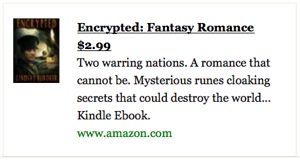
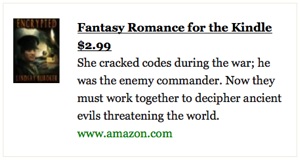
If you create two ads where all other factors are equal (destination URL, book price, audience targeted, etc.), then, after a while, you’ll be able to tell which book blurb is drawing more interest. Eventually you can eliminate the poor performer and swap in a new ad and start the comparison process over again.
I’ve definitely had instances where the ad copy I thought was best didn’t turn out to be the best performer. I’ve got one running now that’s, in my opinion, a little cheesy, but it gets a lot of clicks, so it stays.
Using Different Destination URLS
Goodreads recommends you make the destination URL (or web address) your book’s Goodreads page. I have mixed feelings about this. I was on Goodreads two months before I even noticed book pages had buy links on them. Even if other Goodreads members are swifter than I, you’re putting extra steps between the buyer and the purchase if you send them to the GR page and hope to earn a sale from there.
I’m not saying you should never do this (I have an ad in each of my campaigns that delivers the clicker to the GR page), but you may want to pay less per click, as you’re probably going to see fewer direct sales. That said, there are some less tangible benefits. Goodreads members can add your book to their shelves, which are seen by their friends, who might add your book to their shelves and so on and so forth.
Aside from using Goodreads as a destination URL, if you are an ebook author, you will probably want to set up an ad for each of the places your book is for sale. This is because people with different ebook readers shop at different stores. If they’ve got Nooks, they go to B&N. Kindle people go to Amazon. Etc. etc. etc.
Yes, you could send people to Smashwords, where all ebook formats are available, but a) not many people outside the biz are aware of Smashwords yet and b) you know people already have accounts at the store their e-reader is linked to so there’s only one single solitary click between that reader and a purchase of your ebook. Compare that to some store they’re visiting for the first time and where they have to set up an account and enter in credit card information. More steps means more places from them to bail out and decide they don’t want the book so badly after all.
So, long story short, consider setting up an ad for Barnes & Noble, Amazon, and Apple if your ebooks are available in all these places. They can be the same ad (though it wouldn’t hurt to put the name of the e-reader in the title or the description) for each, just with a different destination.
Note: The least effective thing you could probably do is send people to your author website. I’ve seen a few ads that do this on Goodreads, and unless you’re snagging the person’s email address for your mailing list, this will likely lose you money. Internet marketers will give away free ebooks in exchange for email addresses (once you’re on their list, they can try to sell you other stuff), but this is beyond what most of us are doing with our marketing campaigns. In most cases, you’re just going to be putting extra roadblocks between the interested party and the actual act of purchasing your book. Simple is almost always better. Interested person clicks ad and interested person is delivered to place to purchase book with one click. Author success story!
Crafting Your Ad to Attract Your Target Audience (and nobody else!)
Still reading? Good, because this is the section that’s going to keep you from wasting money and make it possible to profit from running a Goodreads advertising campaign. The other stuff is important too (everything I say is important, duh!), but this is key:
If all you have available is an ebook make sure it says ebook somewhere in your ad.
This is common sense, but easy to overlook (I see people overlooking it on Goodreads right now). A lot of people don’t have e-readers, and they’ll only read paper books. That means it’s pointless to have them click your ad, because they’re not in your target audience.
Consider mentioning the price.
Ad space is finite, but you may also want to list the price of your ebook in your ad. I do this because, at $2.99, Emperor’s Edge and Encrypted are both low compared to traditionally published ebooks. A low price tag alone may make a book more appealing to a Goodreads member.
If your ebook is higher priced, it may still be worth mentioning, because you don’t want bargain-seekers clicking your ad if they’re never going to pony up $10 for an ebook.
Only target people who read in your genre.
After you’ve inputted your title, ad, url, and uploaded a little picture of your book, it’s time to select your audience. This is pretty easy. Click unselect all, and then check the boxes that match your ebook (i.e. science fiction and fantasy or young adult and romance). This means your ads will only be shown to people who’ve indicated they read in your genre.
The downside of precise targeting:
A possible downside to being this precise is that your click-through-rate may be so low that Goodreads won’t display your ad every day. I included the blurb above about how they choose which ads to display (if yours doesn’t get a click early on, it’ll get shelved for the day), and I never have all my ads running full throttle, because some days they just don’t get those early clicks. I do always end up with at least one or two ads from a given campaign running, but this is a big reason as to why my Goodreads bill isn’t very high each day.
From our point of view it’s good not to waste money, but from GR’s point of view, they only want to show ads that are making them money. It’s admittedly a balancing act.
The nice thing is that every day starts anew with Goodreads, and it’s easy to tweak ads and keep trying to see what works. Once you’ve got things down, this system is very “set it and forget it.” Compare that to all the other promotional stuff we try as indie authors, and I think you’ll see the benefits of having a campaign running quietly 24/7 without you having to do anything.
What if I’m a dead-tree-book author and don’t sell ebooks?
Ah, who let you onto this blog? Sorry, kidding. Everything above can apply to you as well, but it’s probably going to be harder to track your results. With the digital publishing platforms, you see sales the same hour they’re made, so you can more easily see the correlation between a bunch of clicks one afternoon and a few sales that afternoon. You can certainly give things a try though.
If you’re published through a traditional press and getting a much smaller royalty than indie ebook authors get, then Goodreads may not be cost-effective for you. Success really depends on you being able to make a profit, and you have to assume it’s going to take multiple clicks to sell a book.
Good luck to you with Goodreads!
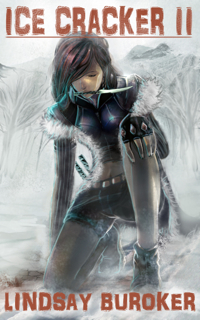 About six weeks ago, I e-published my first novel, The Emperor’s Edge, and, at the same time, I uploaded a free ebook (okay, it’s just a short story) to Smashwords. I hoped people would try the free ebook, like the characters, and go onto buy my novel, which is currently priced at $2.99.
About six weeks ago, I e-published my first novel, The Emperor’s Edge, and, at the same time, I uploaded a free ebook (okay, it’s just a short story) to Smashwords. I hoped people would try the free ebook, like the characters, and go onto buy my novel, which is currently priced at $2.99.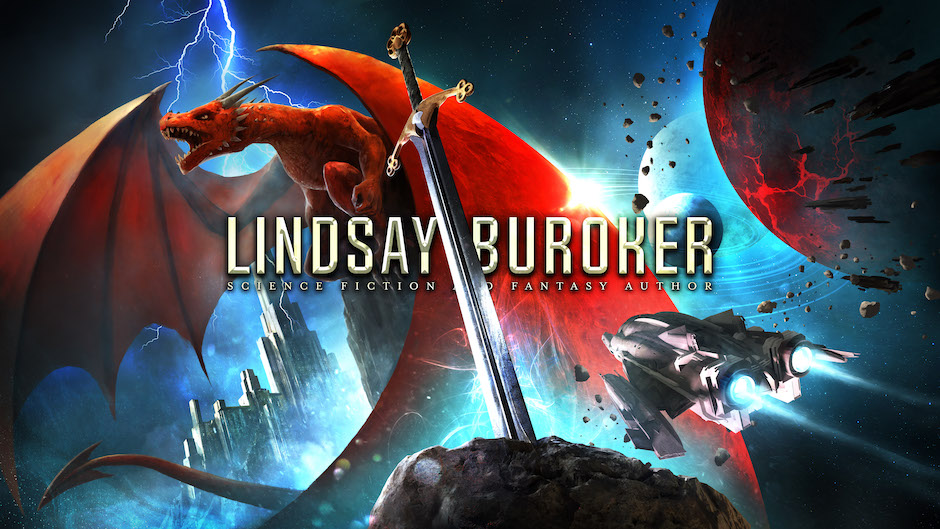

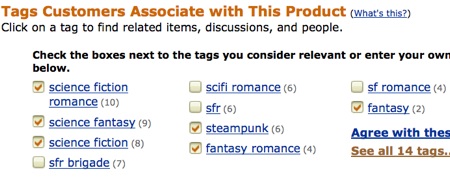
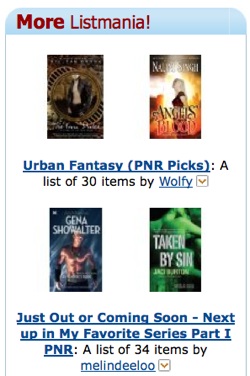
 We’ve got an interview with indie fantasy author Jason Letts for you today. He’s been e-publishing for less than a year, but he’s already sold thousands of ebooks. As you can see from his official author picture, he’s a bit of a character who doesn’t take himself too seriously!
We’ve got an interview with indie fantasy author Jason Letts for you today. He’s been e-publishing for less than a year, but he’s already sold thousands of ebooks. As you can see from his official author picture, he’s a bit of a character who doesn’t take himself too seriously!